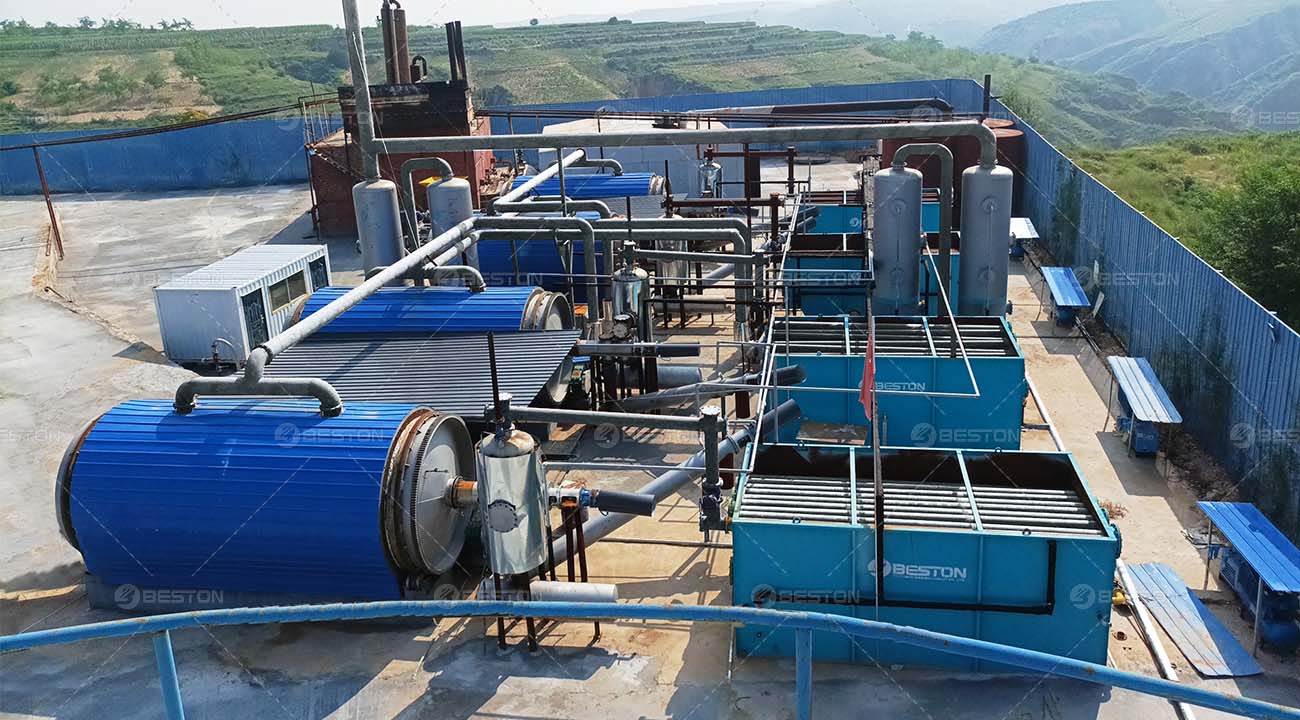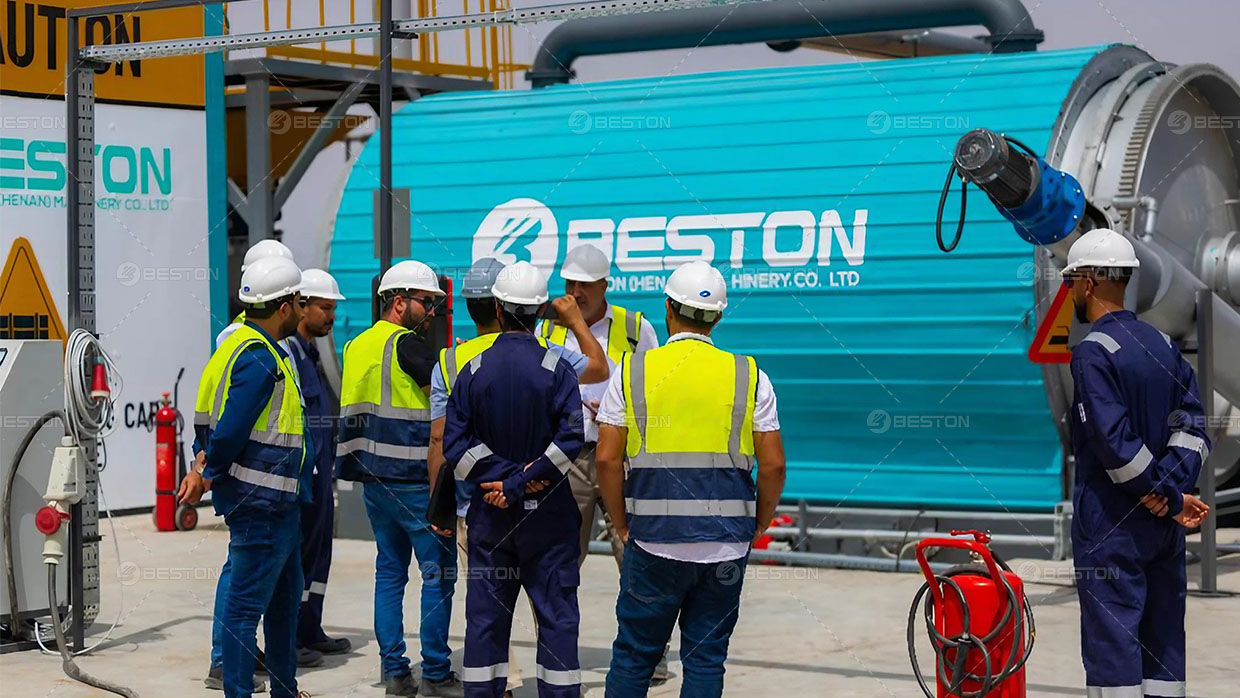Oil sludge is a byproduct of the petroleum industry, and its proper disposal has long posed environmental and operational challenges. Pyrolysis, a thermal decomposition process in the absence of oxygen, has emerged as a highly effective method for treating oil sludge. The process not only reduces the environmental burden but also recovers valuable energy resources. However, the efficiency of oil sludge pyrolysis is influenced by several critical factors, each of which can directly impact the overall performance of an oil sludge pyrolysis plant. Understanding these factors is essential for optimizing the process and ensuring economic viability, especially considering the investment in pyrolysis reactor cost.

1. Composition of Oil Sludge
The chemical composition of oil sludge is one of the primary factors that affect pyrolysis efficiency. Oil sludge typically contains a mix of hydrocarbons, water, and solid materials like heavy metals and mineral particles. Variations in the concentration of these components can influence the thermal decomposition behavior of the sludge.
- Hydrocarbon Content: A higher hydrocarbon content increases the potential for fuel recovery during pyrolysis. This translates into a greater yield of valuable pyrolysis oil, which can be further refined into usable fuels. However, if the hydrocarbon content is too low, the energy recovery process may be less efficient.
- Water Content: High moisture levels in the oil sludge require additional energy to evaporate the water before the pyrolysis process can begin. This increases the overall energy consumption of the oil sludge pyrolysis plant, reducing efficiency. Pre-treatment methods such as dewatering can help minimize this impact.
- Solid Content: The presence of solid particles like metals and mineral residues can affect the consistency of the pyrolysis process. These materials do not break down in the same way as organic compounds, and they may create blockages or interfere with the heat distribution in the reactor.
2. Reactor Temperature
Temperature plays a pivotal role in determining the pyrolysis reaction’s efficiency. Oil sludge needs to be heated to specific temperature ranges to achieve optimal decomposition.
- Low Temperatures: At lower temperatures, the pyrolysis reaction may proceed too slowly, resulting in incomplete decomposition of the hydrocarbons. This leads to lower yields of pyrolysis oil and gas. Additionally, low-temperature pyrolysis may produce more solid residue (char) than desirable.
- Optimal Temperature Range: The typical temperature range for efficient oil sludge pyrolysis is between 400°C and 600°C. Within this range, the hydrocarbons are broken down more completely, maximizing the production of pyrolysis oil and gases. Ensuring consistent temperature control is essential for maintaining the efficiency of the oil sludge pyrolysis plant.
- High Temperatures: Excessively high temperatures can cause secondary reactions, leading to the formation of undesirable byproducts like carbon deposits or excessive gas. This not only reduces the yield of liquid fuel but also increases the pyrolysis reactor cost, as reactors must be designed to withstand higher heat.
3. Feedstock Particle Size
The size of the oil sludge particles entering the pyrolysis reactor significantly affects the reaction’s efficiency. Smaller particles have a larger surface area relative to their volume, which allows for more uniform and rapid heat transfer.
- Smaller Particles: Fine particles heat up more quickly, resulting in faster pyrolysis reactions. This increases the throughput of the plant and improves the overall efficiency of the process.
- Larger Particles: Larger particles take longer to heat, leading to uneven thermal decomposition. This can result in incomplete pyrolysis, reducing the yield of valuable products and increasing the need for post-treatment steps.
Pre-treatment processes like grinding or shredding oil sludge into smaller, more uniform particles can help improve reactor performance and overall plant efficiency.
4. Residence Time in the Reactor
Residence time refers to the amount of time the oil sludge remains inside the pyrolysis reactor. It is another crucial factor that affects both the conversion efficiency and the yield of pyrolysis products.
- Short Residence Time: A shorter residence time may not allow the oil sludge to fully decompose, leading to lower yields of pyrolysis oil. Shorter durations are more likely to produce solid residues that still contain undecomposed hydrocarbons.
- Optimal Residence Time: For optimal results, the oil sludge needs to remain in the reactor long enough for complete thermal decomposition. This ensures that the maximum amount of hydrocarbons is converted into oil and gas, improving the overall yield and profitability of the oil sludge pyrolysis plant.
Adjusting residence time requires careful balancing to avoid unnecessary energy consumption while still achieving complete pyrolysis.
5. Reactor Design and Configuration
The design of the pyrolysis reactor is a key determinant of both the process efficiency and the operational costs. Different reactor designs have varying capabilities when it comes to heat transfer, handling diverse feedstock types, and managing byproduct formation. If you want to choose a pyrolysis plant manufacturer you can trust, you can’t go wrong by choosing Beston.
- Batch vs. Continuous Reactors: Batch reactors process oil sludge in fixed amounts, while continuous reactors allow for a steady feed of sludge, improving throughput and operational efficiency. Continuous reactors are generally more efficient but also have a higher pyrolysis reactor cost due to their complex design.
- Heat Transfer Efficiency: The way heat is distributed within the reactor is critical for achieving uniform pyrolysis. Reactors that incorporate internal heating mechanisms or advanced insulation can significantly reduce heat loss, improving overall efficiency and reducing energy consumption.
- Byproduct Handling: Reactor designs that allow for effective management of byproducts, such as gas and char, can improve the overall process flow. Gases produced during pyrolysis can be redirected as fuel to sustain the reactor’s heating, enhancing energy efficiency.
6. Catalyst Usage
In some cases, catalysts are introduced into the pyrolysis process to lower the required reaction temperature and improve the yield of desired products, such as pyrolysis oil.
- Catalytic Pyrolysis: The use of catalysts can accelerate the thermal cracking of hydrocarbons in the oil sludge, leading to higher conversion rates. Catalysts can also reduce the formation of undesirable byproducts, such as char and tar, making the process cleaner and more efficient.
- Cost Considerations: While catalysts can improve efficiency, they also add to the overall operating costs. The selection of an appropriate catalyst must balance the enhanced efficiency with the additional expense.

7. Energy Recovery and Reuse
Energy efficiency in oil sludge pyrolysis is heavily influenced by the ability to recover and reuse the gases produced during the process. These gases can serve as a valuable energy source, reducing the need for external fuel inputs.
- Syngas Utilization: The gases produced during pyrolysis, known as syngas, can be burned to provide heat for the pyrolysis reactor. This not only reduces external energy requirements but also lowers operating costs.
- Energy Efficiency: Maximizing the recovery and reuse of syngas can greatly improve the overall energy efficiency of the oil sludge pyrolysis plant, making it a more cost-effective solution for waste management.
Conclusion
Optimizing oil sludge pyrolysis efficiency requires a thorough understanding of the various factors that influence the process. The composition of the feedstock, reactor temperature, particle size, and residence time all play crucial roles in determining the yield and quality of pyrolysis products. Additionally, reactor design, catalyst usage, and energy recovery systems contribute significantly to both operational efficiency and the overall cost-effectiveness of the plant. By addressing these factors, operators can improve the performance of oil sludge pyrolysis plants, ensuring they remain a sustainable and economically viable solution for oil sludge management.